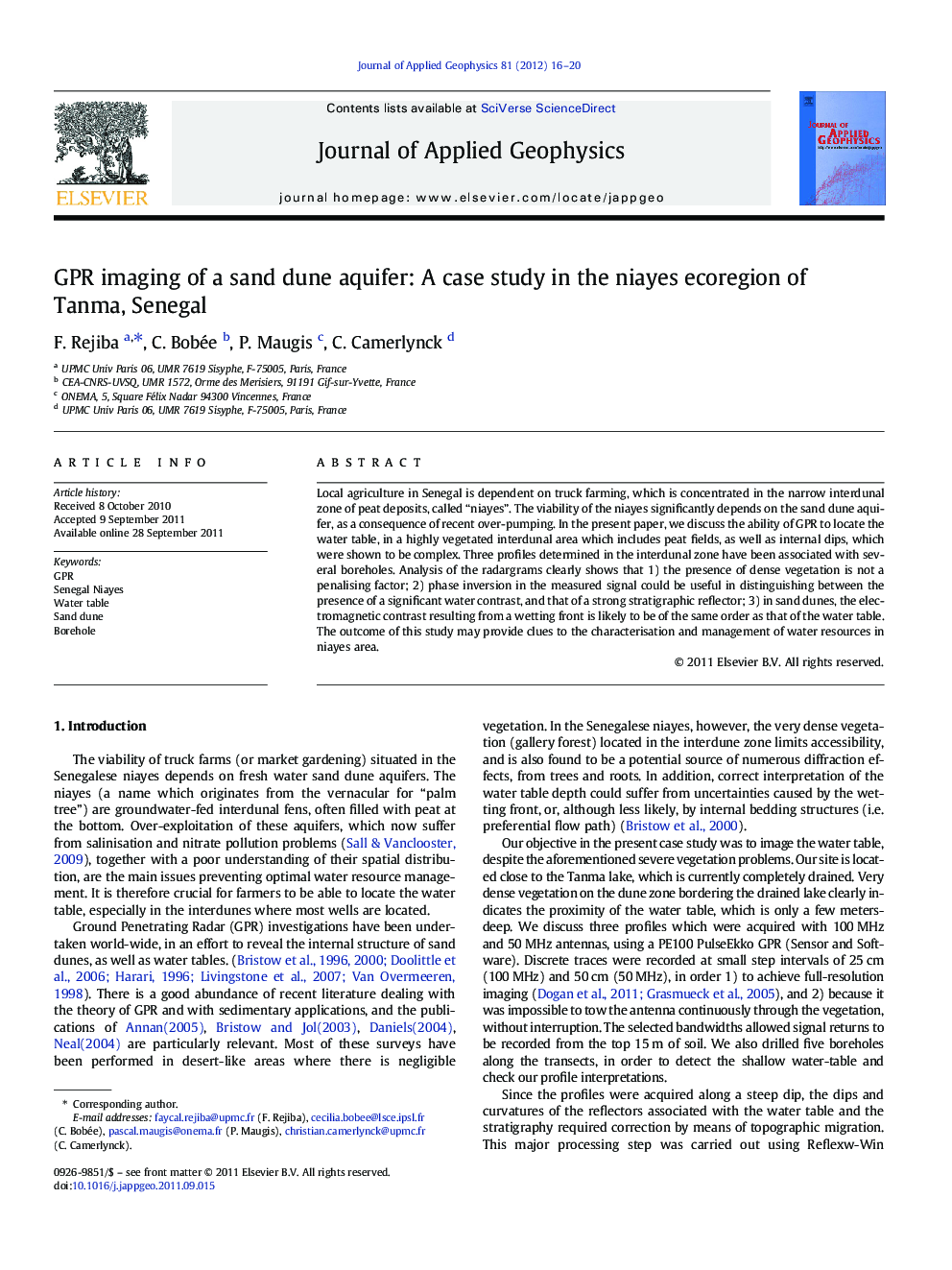| Article ID | Journal | Published Year | Pages | File Type |
|---|---|---|---|---|
| 4740424 | Journal of Applied Geophysics | 2012 | 5 Pages |
Local agriculture in Senegal is dependent on truck farming, which is concentrated in the narrow interdunal zone of peat deposits, called “niayes”. The viability of the niayes significantly depends on the sand dune aquifer, as a consequence of recent over-pumping. In the present paper, we discuss the ability of GPR to locate the water table, in a highly vegetated interdunal area which includes peat fields, as well as internal dips, which were shown to be complex. Three profiles determined in the interdunal zone have been associated with several boreholes. Analysis of the radargrams clearly shows that 1) the presence of dense vegetation is not a penalising factor; 2) phase inversion in the measured signal could be useful in distinguishing between the presence of a significant water contrast, and that of a strong stratigraphic reflector; 3) in sand dunes, the electromagnetic contrast resulting from a wetting front is likely to be of the same order as that of the water table. The outcome of this study may provide clues to the characterisation and management of water resources in niayes area.
► GPR is perfectly suited to locate a water table in sand dunes even in a vegetated area. ► Topographic migration is mandatory in case of significant topography. ► GPR investigations could be used for sand dune aquifer monitoring and water resources management.
